STATE OF CHANGE
STATE OF CHANGE
COLORADO POLITICS
IN THE TWENTY-FIRST CENTURY
EDITED BY
COURTENAY W. DAUM
ROBERT J. DUFFY
JOHN A. STRAAYER
UNIVERSITY PRESS OF COLORADO
2011 by the University Press of Colorado
Published by the University Press of Colorado
5589 Arapahoe Avenue, Suite 206C
Boulder, Colorado 80303
All rights reserved
Printed in the United States of America
| The University Press of Colorado is a proud member of the Association of American University Presses. |
The University Press of Colorado is a cooperative publishing enterprise supported, in part, by Adams State College, Colorado State University, Fort Lewis College, Metropolitan State College of Denver, Regis University, University of Colorado, University of Northern Colorado, and Western State College of Colorado.

The paper used in this publication meets the minimum requirements of the American National Standard for Information SciencesPermanence of Paper for Printed Library Materials. ANSI Z39.481992
Library of Congress Cataloging-in-Publication Data
State of change: Colorado politics in the twenty-first century / edited by Courtenay W. Daum, Robert J. Duffy, and John A. Straayer.
p. cm.
Includes bibliographical references and index.
ISBN 9781-60732086-9 (pbk. : alk. paper) ISBN 9781-60732087-6 (ebk.) 1. ColoradoPolitics and government21st century. I. Daum, Courtenay W. II. Duffy, Robert J. III. Straayer, John A., 1939- IV Title: Colorado politics in the twenty-first century.
JK7816.S73 2011
320.9788dc23
2011018035
Design by Daniel Pratt
20 19 18 17 16 15 14 13 12 11 10 9 8 7 6 5 4 3 2 1
Acknowledgments
Courtenay Daum, Bob Duffy, and John Straayer owe a debt of gratitude to our colleagues and the staff in the Political Science Department at Colorado State University, especially Violet Marquart and Maureen Bruner. Our thanks as well to the good folks at the University Press of Colorado, including Darrin Pratt, Jessica dArbonne, Daniel Pratt, and Laura Furney; to our skilled and tenacious copyeditor, Cheryl Carnahan; and to the peer reviewers, including John Redifer of Mesa State College and James Null of the University of Colorado at Colorado Springs. Finally, we thank the contributors to the edited volume for their substantive contributions, as well as their patience and cooperation with various requests and deadlines.
John Straayer is indebted to the many good legislative interns, General Assembly members and staffers, lobbyists, and capitol reporters who over the years have provided cheerful help and friendship. Thanks to Colorado State University for a sabbatical leave that helped make this work possible. On this project, as with others, thanks to Judy Straayer for enduring his endless political jabber.
Bob Duffy thanks David Magleby of the Center for the Study of Elections and Democracy at Brigham Young University for organizing a series of studies of campaign finance and communications in competitive federal elections. The Colorado studies, which were supported by the Pew Charitable Trusts, date back to 2004 and provided the foundation for many of the ideas expressed in this volume. He would also like to thank the many individuals associated with campaigns, parties, and interest groups for speaking with him and answering his questions about Colorado politics. A number of graduate student research associates were also instrumental in collecting data: Mike Roloff, Andy Kear, Christina Farhart, and Erik Mims. Finally, thanks to Debbie, Julia, Marissa, and Sarina for tolerating absences as a result of this and other projects.
Courtenay Daum would like to thank her colleagues in the Political Science Department, especially John Straayer for sharing his vast knowledge of Colorado politics. In addition, she thanks her many undergraduate and graduate students for their inspiration and willingness to serve as a useful sounding board for various research ideas and projects. Finally, she thanks Joe for his incredible support and patience over the duration of this project (and many others) and Zoe and Bodhi for always helping her keep her priorities straight and in check.
STATE OF CHANGE
INTRODUCTION
State of Change: Colorado Politics in the Twenty-First Century
Courtenay W. Daum, Robert J. Duffy, Kyle Saunders, and John A. Straayer
Over the past several decades, Colorados political landscape has changed in many ways and in dramatic fashion. This volume identifies and focuses on these changes and seeks to provide some explanations for these shifts by placing them within the larger context of national and regional politics and shifting demographic and partisan patterns in Colorado. These developments include a shift within the Republican Party that led to the end of its dominance in most state and congressional elections, as well as increased use of direct democracy that has resulted in the implementation of term limits, significant changes in fiscal policy, major diminishment of state and local governments taxing and spending authority, and a variety of unintended consequences of the initiative process. The result is a political landscape in the early twenty-first century that is drastically different from the Colorado politics of a few decades ago. This volume will use these changes as a starting point to present a variety of perspectives on Colorados recent political evolution.
CONTEXT OF COLORADO ELECTIONS
In 1876 Colorado was admitted to the Union as the thirty-eighth state, and it is known as the Centennial State because its admission coincided with the 100th anniversary of the Declaration of Independence. Similar to constitutions in other states, the Colorado Constitution provides for a three-branch state government that includes an executive branch, a two-house legislature, and a state judiciary (Colorado Constitution, Article III). The governor, thirty-five members of the state senate, and sixty-five members of the state house are elected by the citizens of Colorado, whereas members of the Colorado courts are selected through a hybrid appointment-election system. Judges on the Colorado Supreme Court, the Colorado Appeals Court, district courts, and county courts are initially nominated by nominating commissions and appointed by the governor to serve a provisional two-year term (Lorch 2003: 179). At the conclusion of the provisional term, the justice or judge may run for election on a noncompetitive ballot that asks simply whether the individual should be retained in office; if the public approves, he or she will serve a full term with the option of running for reelection until he or she reaches the mandatory retirement age of seventy-two (Lorch 2003: 180181).
Yet Colorados unique history and location have combined to influence the state government and elections in ways that are distinct from other states. For example, Colorados geographywithin the states borders the eastern plains meet the Rocky Mountainsand abundant natural resources have affected the states economic and political development.
Historically, the states natural beauty and abundant natural resources have attracted individuals from out of state as both new residents and tourists; in fact, a majority of Colorado residents are natives of other states (National Journal 2010). The election of Bill Ritter as Colorado governor in 2006 was the first time a native Coloradan had been elected governor in more than thirty-five years. According to the

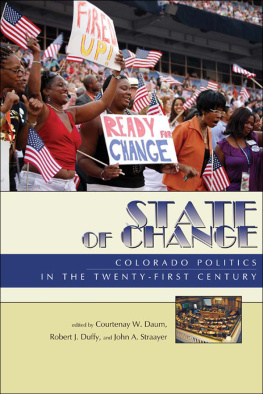

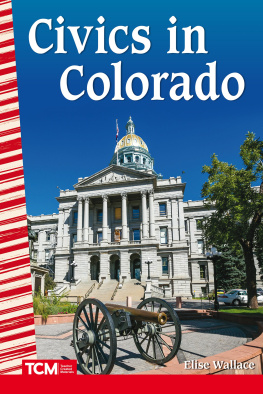
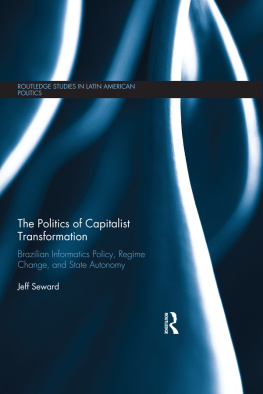
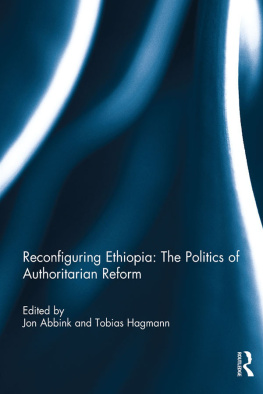
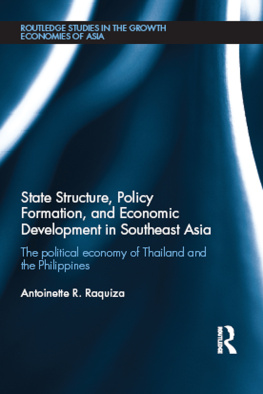
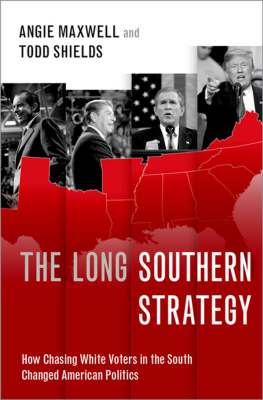
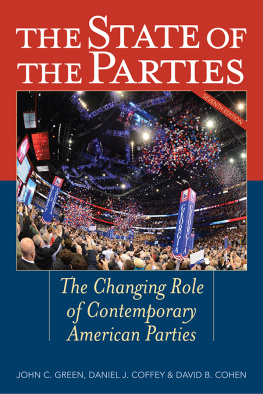
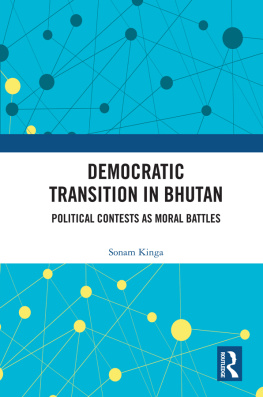
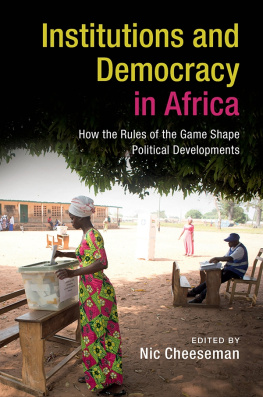

 The paper used in this publication meets the minimum requirements of the American National Standard for Information SciencesPermanence of Paper for Printed Library Materials. ANSI Z39.481992
The paper used in this publication meets the minimum requirements of the American National Standard for Information SciencesPermanence of Paper for Printed Library Materials. ANSI Z39.481992